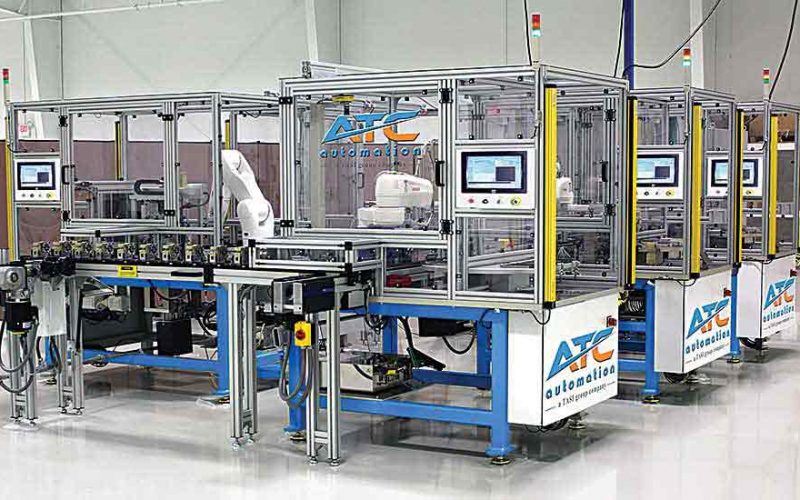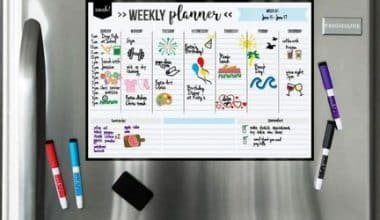The main problem for businesses is to make it possible to achieve the improving living standards that the public has a right to demand. The primary tool for attaining this goal will continue to be mass manufacturing, but we must increase our capital expenditure to achieve higher productivity at lower unit costs. The vast sums spent on research operate as a stimulus to capital expenditure, resulting in the replacement of much existing gear. Improved and new items will force change as a result of technological advancement. Having exposed us to that, let’s further consider capital equipment, types, examples, and all you need to know extensively.
Capital Equipment
Physical goods purchased for a productive activity are referred to as capital equipment. These things are typically purchased by businesses in order to grow their operations or stay up with new techniques or technological advancements. They are generally recorded as fixed assets in accounting, but to be classed as such, they must be worth more than $5,000 and have a life expectancy of more than one year, according to US accounting guidelines. When it comes to capital equipment, certain industries spend far more than others.
Airlines are an example of this; because the majority of their company is based on the operating of aircraft (equipment), their capital equipment investments are usually higher than in other industries. Manufacturing enterprises, on the other hand, require more capital than service businesses. Machinery, trucks, hoisting systems, inventory movement equipment, and warehouse racks are examples of these goods.
Overview
There are two schools of thought when it comes to selecting whether to buy and register capital equipment on your books. The first option is to buy and install the necessary equipment at a time of the year when increased business warrants it, ensuring sufficient cash flow to cover additional loan service or the outright purchase of the equipment. The second method is to have the equipment purchased and installed at the start of the business year or quarter closest to when you’ll actually need it, providing time for training and bug fixes before going into full production.
The path you take is determined by your cash flow. The latter technique works well if you can service additional debt or acquire the equipment from operational expenses. If your cash flow is limited, go with the first option. Capital equipment costs are under the heading “capital” in either case.
Example
Plastic Pipes Co. makes water pipes for construction and residential markets. The Board of Directors of the company is now considering the investment strategy for the coming year. The plan calls for a total investment of $5,400,000, which will be among the following programs: $1,400,000 for new building construction, $2,000,000 for capital equipment, $1,500,000 for stock investments, and $500,000 for new staff cafeteria facilities.
The capital equipment investment includes the purchase of new machinery to establish three new production lines, as well as the procurement of new packaging equipment and the upgrading of the raw material warehouse. This investment program is to boost the company’s earnings per share by 50% in the coming fiscal year.
Types of capital equipment
#1. Capital goods
Capital in the form of fixed assets is used to produce goods, such as plants and equipment.
#2. Capital assets
Assets, tangible and intangible, are used to generate revenues on cost savings by providing production, distribution, or service capabilities for more than one year.
#3. Capital expenditure
An investment in tangible productive assets that will provide continued service beyond the accounting period in which they are purchased.
5 Attributes Of Capital Equipment
Since the passage of the Affordable Care Act, most medical systems have been juggling a difficult balancing act of trying to enhance healthcare quality while reducing spending. When it comes to deciding whether or not to invest in new capital equipment, this becomes a dilemma.
Information Technology, Clinical Engineering, Design and Construction, Purchasing, Accounting, as well as Surgery and other capital-intensive areas, can all contribute to capital expenditures in healthcare. It’s critical to meet the following five criteria when determining what qualifies as capital equipment.
#1. Acquisition Cos
For capital purchases, each facility or practice will have a specified cost barrier. This could be as low as $500 or as high as $5000, depending on the size of your practice, and is largely the administrative process of the facility. A small clinic with fewer assets can afford to deal with lower criteria since it has more time.
The price of the equipment plus other costs associated with the sale, such as shipping and setup, is in acquisition costs. Items like printers, keyboards, and software might be included in the cost of purchases with peripherals, such as computers.
#2. Not Disposable Or Consumable
Capital expenditures cannot be decided only on the basis of cost. Consumables, by definition, are commodities that are up rapidly. Some healthcare expenditures may satisfy the cost criterion, but they may not qualify as capital if they are purchased to be used, or “consumed.”
Capital equipment is a type of asset that should be identified and inventoried as such. as well as being subject to depreciation.
#3. Stand Alone
Even if a significant component acquisition meets both the cost and non-consumable criteria, it may not be considered capital equipment on its own. The term “stand-alone” refers to a piece that can be used on its own. Understanding this property can assist you in accurately grouping components so that they can be documented with the major capital equipment if necessary.
However, keep in mind that your procurement process may allow you to buy subsequent components. Such as capital equipment, to add value or extend the life of an existing piece of capital equipment. The value of the sponsored equipment could be by the later purchase.
#4. Useful Life Of One Year Or More
A simple definition of a capital asset is one that is acquired with the intention of making a profit and will benefit the company for at least a year. Additionally, your capital equipment must have a useful life of more than one year in order to fulfill present value and future value in assessing depreciation. If it doesn’t, it’ll be classified as consumable by most accounting systems.
#5. Qualifies As Tangible Property
Non-tangible assets that benefit a corporation, such as trademarks and intellectual property, are in the definition of capital assets. However, in order to comprehend capital equipment buying, the final attribute should be that it is a tangible asset. Tangible property is defined by taxing jurisdictions as anything that can be moved and is used in the company. Items purchased for resale may not qualify as tangible property and would be classified as inventory rather than capital equipment.
Look to CME for assistance when you need to add to your capital equipment. Our goal, based on our 30 years of experience, is to provide project facilitation and support to help you realize your vision for improving your facilities. Please contact us to discuss your plans and see how we can assist you.
What are the 4 Components of Capital?
Working capital, loan capital, equity capital, and trade capital make up the four primary categories of capital. The term “trading capital” refers to the money that brokerages and other types of financial organizations employ. On the balance sheet, any debt capital will be matched by an equivalent amount of debt obligation.
What Does it Mean to Capitalize Equipment?
Instead of writing off the cost of an asset as an expense, you can capitalize it by including it in your balance sheet. Therefore, if you spend $1,000 on a piece of equipment, instead of immediately reporting the transaction as a cost of $1,000, you should record the equipment on the balance sheet as an asset with a value of $1,000.
What is Capital Equipment Depreciation?
Because capital equipment is regarded as a noncurrent asset, its value is reduced through the process of depreciation over the course of its useful lifetime. The purchase price is subtracted from the total amount of depreciation to arrive at the formula for depreciable cost. Even if some of these terminologies are similar to one another, it is essential that you get familiar with all of them.
Is Capital Equipment a Fixed Cost?
Capital costs are expenses that are incurred just once and are permanent in nature. These costs include the acquisition of land, buildings, construction materials, and equipment that are used in the manufacturing of goods or the provision of services. In other terms, it refers to the entire amount of money that must be spent on a project before it can be considered financially viable.
Why is a circular economy for capital equipment important?
Buildings, machinery, and infrastructure are examples of capital equipment that we employ to keep our society going. Everything from computer servers to medical scanners and power plants to automobiles, railroads, and ships is born. They are often costly to manufacture, and they are things that are intended, produced, and acquired to last a long time, frequently several decades.
Because capital equipment examples utilize 7.2 million tons of raw materials per year. Including huge volumes of high-value metals and minerals, a circular economy is critical. The capital equipment sector is leading the way in many facets of the transition to a circular economy due to the larger value at stake. Their clients, for example, are more accustomed to service-based company models. Which might lead to more circularity in a business-to-business scenario. As a result, capital equipment examples can teach other industries valuable lessons.
How Do Firms Manage Capital Items
For the management of capital assets, some companies construct a lifecycle management approach. The goal of the approach is to maximize asset contributions while lowering asset lifecycle expenses. Each asset class is to have a productive economic life of a number of years, according to the method. When assets return more value to owners than they cost to operate. They have reached the end of their “economic life.”
Individual asset classes vehicles, factory machines, office furniture, and store equipment. For example, are normally an economic life by local asset managers and tax authorities. Asset owners expect their assets to earn more over the course of their lives than the cost of acquiring, maintaining, and operating them. When asset costs outweigh asset returns, the asset is to have the end of its “economic life.”
Throughout their economic lives, businesses expect their capital assets, for example, their equipment, to justify their purchase and existence. Profitability and investment measures such as return on investment (ROI), return on assets (ROA), total asset turnover, and return on capital are commonly used by capital equipment examples managers to evaluate asset performance on a regular basis (ROCE). Assets that are underperforming may become targets for initiatives to enhance asset utilization. Alternatively, they could be for replacement or liquidation. See “Assets” for additional information on asset management and asset performance measurement.
Firms Authorize Spending to Acquire Capital and Non-Capital Items
Businesses usually plan, manage, and fund the acquisition of capital items on a company-wide basis. They typically make capital funding decisions, moreover, through committees, such as a Capital Review Committee.
These committees solicit and receive funding proposals from across the entire firm as part of the capital budgeting cycle. Committee members review proposals, interview sponsors, and then prioritize capital funding requests. They approve and authorize spending for the highest priority proposals first, and then continue through lower priority proposals. Approval continues until they reach the capital spending ceiling for the current budgeting cycle.
Acquisition of non-capital items, by contrast, typically initiates with different managers. In most cases, individual managers at many different levels can authorize non-capital spending.
CAPITAL EQUIPMENT FAQs
Are laptops capital equipment?
Technology and computer equipment, including servers, laptops, desktop computers, and peripherals would be capital expenditures.
Is software considered capital equipment?
Software (intangible personal property) having a value of at least $100,000 is also considered to be capital equipment. If the software upgrade/addition occurs within the same fiscal year that the asset was placed in service, the cost, regardless of the amount, should be added to the value of the existing asset.
Is computer an equipment?
Definition Computer equipment. Electronic appliances and services related to the personal computer, including the PC (desktop or laptop), communication between computers, and the services required by intercommunication networks. These fundamentally include personal computers (Desktop PC, Laptop, and PDA).






